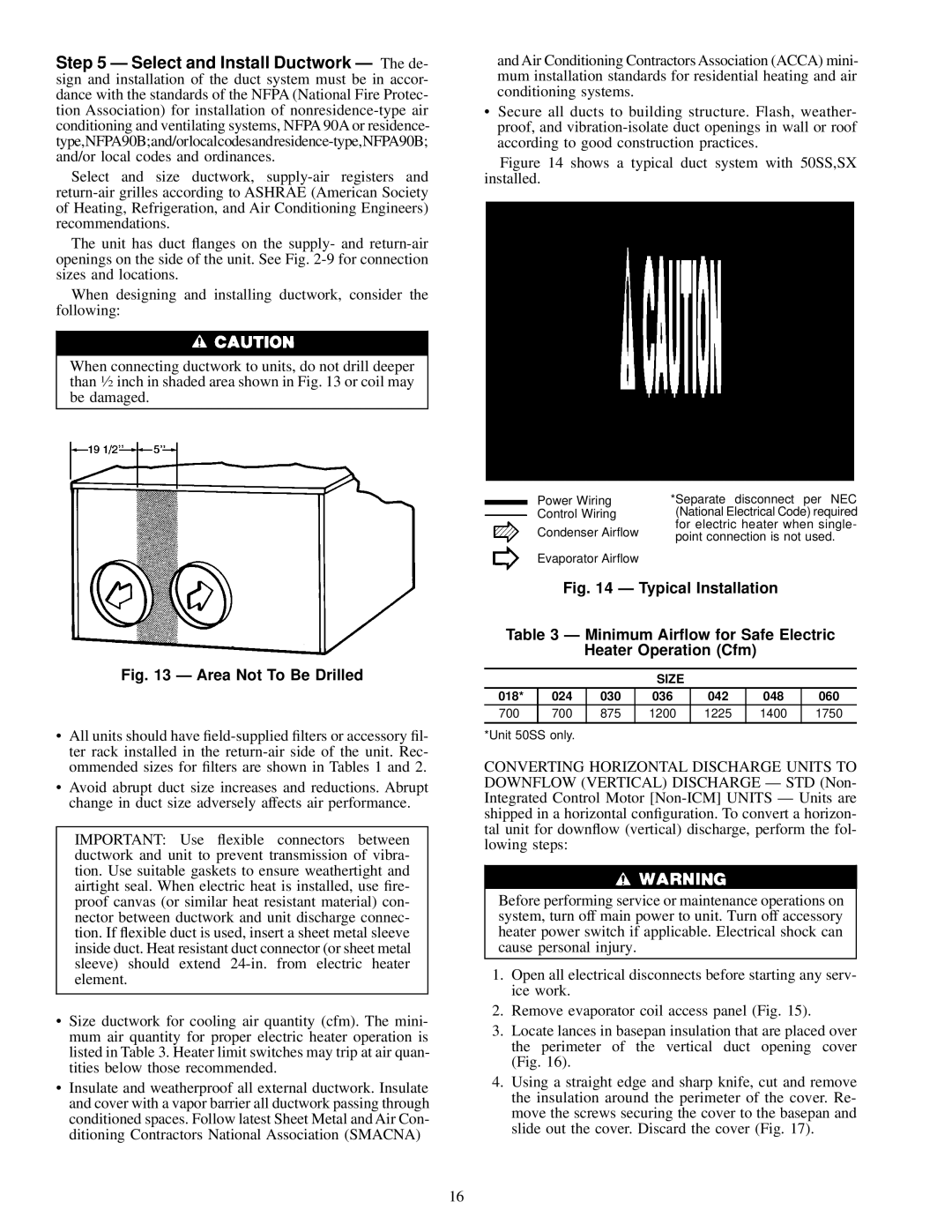
Step 5 Ð Select and Install Ductwork Ð The de- sign and installation of the duct system must be in accor- dance with the standards of the NFPA (National Fire Protec- tion Association) for installation of
Select and size ductwork,
The unit has duct ¯anges on the supply- and
When designing and installing ductwork, consider the following:
When connecting ductwork to units, do not drill deeper than 1¤2 inch in shaded area shown in Fig. 13 or coil may be damaged.
Fig. 13 Ð Area Not To Be Drilled
·All units should have
·Avoid abrupt duct size increases and reductions. Abrupt change in duct size adversely affects air performance.
IMPORTANT: Use ¯exible connectors between ductwork and unit to prevent transmission of vibra- tion. Use suitable gaskets to ensure weathertight and airtight seal. When electric heat is installed, use ®re- proof canvas (or similar heat resistant material) con- nector between ductwork and unit discharge connec- tion. If ¯exible duct is used, insert a sheet metal sleeve inside duct. Heat resistant duct connector (or sheet metal sleeve) should extend
·Size ductwork for cooling air quantity (cfm). The mini- mum air quantity for proper electric heater operation is listed in Table 3. Heater limit switches may trip at air quan- tities below those recommended.
·Insulate and weatherproof all external ductwork. Insulate and cover with a vapor barrier all ductwork passing through conditioned spaces. Follow latest Sheet Metal and Air Con- ditioning Contractors National Association (SMACNA)
and Air Conditioning Contractors Association (ACCA) mini- mum installation standards for residential heating and air conditioning systems.
·Secure all ducts to building structure. Flash, weather- proof, and
Figure 14 shows a typical duct system with 50SS,SX installed.
Power Wiring | *Separate disconnect per NEC | |
Control Wiring | (National Electrical Code) required | |
Condenser Air¯ow | for electric heater when single- | |
point connection is not used. | ||
| ||
Evaporator Air¯ow |
|
Fig. 14 Ð Typical Installation
Table 3 Ð Minimum Air¯ow for Safe Electric
Heater Operation (Cfm)
SIZE
018* | 024 | 030 | 036 | 042 | 048 | 060 |
700 | 700 | 875 | 1200 | 1225 | 1400 | 1750 |
|
|
|
|
|
|
|
*Unit 50SS only.
CONVERTING HORIZONTAL DISCHARGE UNITS TO DOWNFLOW (VERTICAL) DISCHARGE Ð STD (Non- Integrated Control Motor
Before performing service or maintenance operations on system, turn off main power to unit. Turn off accessory heater power switch if applicable. Electrical shock can cause personal injury.
1.Open all electrical disconnects before starting any serv- ice work.
2.Remove evaporator coil access panel (Fig. 15).
3.Locate lances in basepan insulation that are placed over the perimeter of the vertical duct opening cover (Fig. 16).
4.Using a straight edge and sharp knife, cut and remove the insulation around the perimeter of the cover. Re- move the screws securing the cover to the basepan and slide out the cover. Discard the cover (Fig. 17).
16
